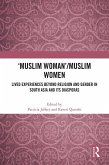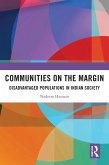The author also sheds light on the impact of such events as the Babri Masjid demolition in 1992 and the subsequent riots, the Gujarat communal carnage in 2002, and the anti-Sikh violence in New Delhi in 1984, along with the rise of Hindutva, and growing Islamophobia experienced worldwide in the post-9/11 period - on the articulation of identities at the local level and increasing religion-based spatial segregation in Indian cities. The study highlights how these incidents combine in different ways to increase the sense of marginalisation experienced by Muslims at the level of the locality.
Understanding the need to look beyond preconceived religious categories, this book will serve as essential reading for those interested in sociology, anthropology, gender, religious and urban studies, as well as policymakers and organisations concerned with issues related to religious minorities in India.
Dieser Download kann aus rechtlichen Gründen nur mit Rechnungsadresse in A, B, BG, CY, CZ, D, DK, EW, E, FIN, F, GR, HR, H, IRL, I, LT, L, LR, M, NL, PL, P, R, S, SLO, SK ausgeliefert werden.









